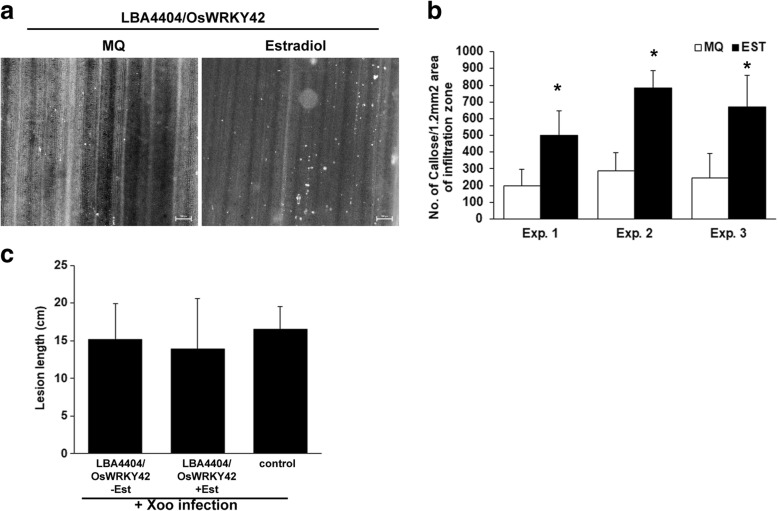Fig. 2.
Transient overexpression of OsWRKY42 enhances callose deposition but does not provide enhanced tolerance to bacterial infection in rice leaves. For assaying callose deposition, the leaves (n = 10) of fourteen days old TN-1 rice seedlings were syringe infiltrated with Agrobacterium strain LBA4404/pMDC7::OsWRKY42 along with either 20 μM 17-β Estradiol (Est) or water. a. After 16 h, the leaves were collected, stained with aniline blue and visualized under an epifluorescence microscope. Callose deposits are seen as white spots in the images. The scale bar represents 50 μm. b. The number of callose deposits per area of view was counted manually and the average of ten leaves was plotted. c. Xoo infections were carried out in mid veins of leaves (n = 15–20) of 40 days old TN-1 rice plants. The midveins were preinjected with LBA4404/pMDC7::OsWRKY42 with or without estradiol. After 12 h, inoculation with Xoo was performed 1–2 cm below the point of Agrobacterial injection by pricking with a needle dipped in a saturated culture of Xoo. The lesion was seen as yellowing of the midvein and the lesion length was measured 10 days post infection. The bar represents average lesion length. Error bar represents standard deviation. Data was analysed using the Student’s t-test for independent means (*indicates significant difference with p value < 0.05). Similar results were obtained in four independent experiments

